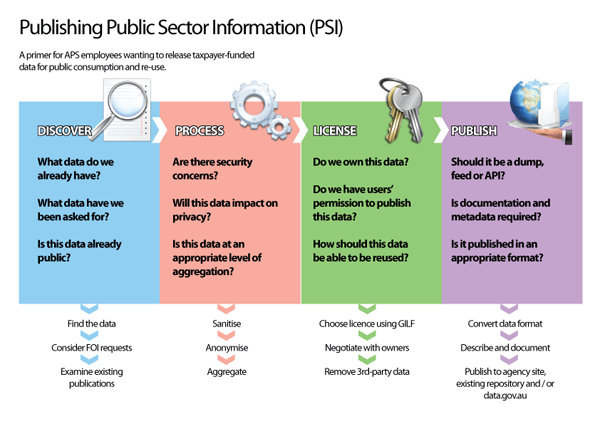Australian government releases Government 2.0 Primer
The Australian government is gaining momentum in its Government 2.0 initiatives, marked today by the launch by the Australian Government Information Management Office (AGIMO) of a handy Government 2.0 Primer.
The Report of the Australian Government 2.0 Taskforce was submitted in December 2009. Although the Taskforce chairman Nicholas Gruen had earlier noted that Australian Government 2.0 initiatives were significantly behind countries such as the US and UK, the report and the government response impressed Gartner sufficiently to say “if the Aussies walk the talk, they have a very good chance to be the real leaders in the Gov 2.0 / Open Government race.”
Since then, the Declaration of Open Government by the Finance Minister (with comments enabled!) has pushed the ante up.
The primer is exactly what it says, a compact guide to Government 2.0 for neophytes, in the spirit of Gov 2 released early to be subsequently refined.

Source: Department of Finance and Deregulation
It has three main sections:
* Government 2.0 Planning and Governance, which includes how to develop internal social media policies, a brief overview of the planning process, and a dicussion of moderation policies.
* Government 2.0 Scenarios, which looks at specific ways that Gov 2 approaches can be applied by departments, such as inter and intra-agengy collaboration, policy consultation, and publishing governement data (where the image above is used to illustrate the process).
* Government 2.0 Tools, which quickly runs through a wide variety of tools such as blogs, wikis, social networking, ideas markets, and syndication.
The scope of coverage is not very different to my earlier Implementing Enterprise 2.0 report, which covered among other topics benefits, governance, and a range of tools and platforms including blogs, wikis, and social networks. My focus was very much commercial enterprise, so while the general principles remain the same, some of the use cases such as policy consultation need to be adapted to public sector use.
It will be very interesting to see whether the pace of change in Australian government is maintained or even, as it should, accelerates, given the political constraints of the day. There are other currently a number of other interesting initiatives driving more attention to the space, including a website (and soon book) on Australia’s Government 2.0 future run by consultant Kate Carruthers, and Government 2.0 advocate Craig Thomler.
Just as Australia came from way behind to be ranked first in the world in the usage of social networks, there is the possibility for Australia to demonstrate on a global scale the potential of Government 2.0 approaches and mentality. To be frank I’m not holding my breath, given the inertia in current government structures, but there are enough encouraging developments to believe the current excellent momentum will continue.
[UPDATE:] Contributor to the primer Stephen Collins (trib) acknowledges those who provided input to the report, and notes he will release his original document on his blog in a couple of weeks.
